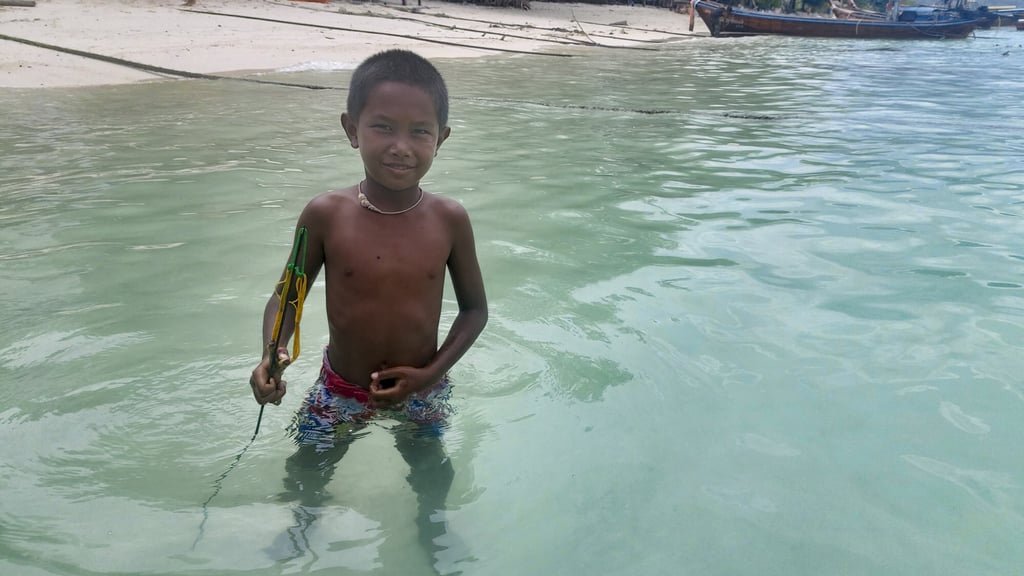Reggae bars, white-sand beaches, diving make Koh Lipe, Thailand, a tourist draw, but we’re here with sea gypsies to catch some fish
- First settled 150 years ago, Koh Lipe had a quiet existence before fishermen and criminals appeared, followed by tourists 20 years ago
- Before the pandemic, tourism was spiking, but a ride with local sea gypsy fishermen reveals what life used to be like

Sixty-three-year-old Oi takes one last puff of his self-rolled areca palm leaf cigarette. Bare-chested and barefoot, he walks across scorching, white-sugar sand and leans against his 41-year-old son Kiang’s long-tail boat.
Small waves are lapping as he chews with reddened teeth on betel nut gum, squinting in the bright sunlight. Darkly tanned, his muscular physique tells the story of his life as a fisherman.
These Urak Lawoi – one of Thailand’s three main Chao Lay (“people of the sea”), or sea gypsy, tribes – are taking me on a trip across the sapphire waters surrounding Koh Lipe, an island in Thailand’s Satun province and a latecomer to the tourist trail.
I am keen to learn the tricks of fishing these pristine, crystal seas with a hook and line. As it happens, I learn a whole lot more, not least that this idyll, with its incredible dive sites, laid-back bars and Thai-smile vibes, has a shady past.
Lipe-born Kiang, known on official documents as Toithep Hantaleh, scrapes salt off the propeller with steel wool to prevent the engine spluttering, and tells me to hop onto his wooden boat. His eight-year-old, sun-bronzed son stares at me. While scooping water out from beneath the seats, Kiang explains, “If we don’t do it, we need to swim back.”
He fires up the engine, sending black diesel clouds skywards, and deftly spins the long shaft of his traditional craft up and down, weaving between other long-tail boats, stirring the transparent waters. As Lipe recedes, the engine chugs, water spouts off the propeller and the sea’s colour changes from amazonite to bright blue.
